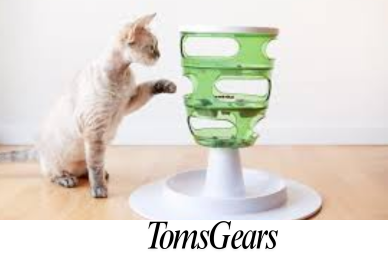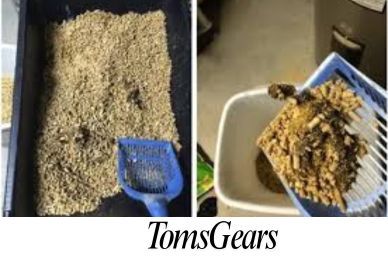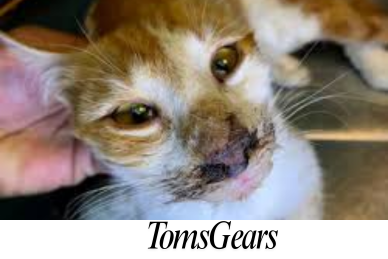Can Cats Use Litter Box After Being Spayed?
Let’s be real – when our feline friends go through something as major as a spay surgery, we pet parents can’t help but worry about every little thing, including their litter box habits. The short answer? Yes, cats can absolutely use the litter box after being spayed. However, there may be some temporary hiccups as your furry pal recovers from the procedure. In this article, I’ll dive into what those hiccups might look like and how you can help your kitty navigate them smoothly. So stick around – I’ve got all the deets you need to put your litter box concerns to rest.
Will Cats Be Able to Use the Litter Box After Being Spayed?
The simple answer is yes, cats can absolutely use the litter box after getting spayed. The spay surgery, which removes a female cat’s reproductive organs, doesn’t directly interfere with her ability to do her business in the litter box.
However, that’s not the end of the story. While the procedure itself doesn’t impact litter box habits, the recovery process might throw a temporary wrench in your kitty’s usual potty routine. That’s why it’s so important to keep a close eye on your feline friend in the days and weeks following her spay surgery.
If you notice any changes in how she’s using (or not using) the litter box, don’t just brush it off as temporary confusion. Instead, give your vet a call to rule out any potential health issues or complications that could be causing the litter box behavior change. Your vet will be able to assess the situation and provide guidance on getting your cat back on track with her litter habits.
Litter Box Habits During the Recovery Period
While spaying is a routine procedure, it’s still a major surgery, and your cat may experience some discomfort or confusion during the initial recovery phase. This can lead to temporary changes in their litter box habits, which is completely normal and to be expected.
Temporary Changes in Litter Box Behavior
It’s not uncommon for cats to urinate or defecate outside the litter box or seem hesitant to enter it in the days following their spay surgery. This behavior can be attributed to a variety of factors, including:
- Pain or discomfort from the surgical site
- Grogginess or disorientation from the anesthesia
- Stress or anxiety associated with the vet visit and recovery process
While frustrating for us as pet owners, it’s crucial to remember that these temporary lapses are not intentional on your cat’s part. They’re simply adjusting to the changes in their body and trying to cope with the aftermath of the procedure.
Placing the Litter Box Closer
To make the litter box more accessible during the recovery period, consider placing it closer to your cat’s resting area or in a quiet, low-traffic area of your home. This simple adjustment can make it easier for your furry friend to reach the litter box without having to navigate too far, reducing the chances of accidents.
Choosing a Suitable Litter Type
During the initial week post-surgery, avoid traditional litter that could irritate or contaminate the incision site. Instead, opt for gentle, low-dust alternatives like shredded newspaper, dust-free litter, or pellet litter found at grocery or pet stores. Steer clear of abrasive materials like sand, as they can potentially cause infections by getting trapped in the healing incision area. Your priority is minimizing discomfort and keeping the surgical site clean and dry.
Monitoring Your Cat’s Litter Box Use Post-Surgery
After your cat returns home from the vet, it’s crucial to monitor their litter box use closely, as this can provide valuable insights into their recovery progress and help you identify any potential issues that may require medical attention.
Signs of Discomfort or Avoidance
Pay close attention to your cat’s behavior when they approach or attempt to use the litter box. If you notice any signs of discomfort, such as straining, vocalizing, or avoiding the litter box altogether, it could indicate that something is amiss.
Potential causes for this behavior may include:
- Pain or discomfort from the surgical site
- Urinary tract infection or other post-operative complication
- Stress or anxiety related to the litter box itself
If you observe any of these signs, it’s essential to contact your veterinarian immediately for further evaluation and guidance.
When to Contact Your Veterinarian
In addition to the signs mentioned above, you should also contact your vet if your cat hasn’t used the litter box within 24 hours after returning home from the surgery. This could be an indication of a more severe issue, such as a blockage or other complications, and prompt medical attention may be necessary.
Remember, your veterinarian is your best resource for addressing any concerns or questions you may have regarding your cat’s litter box habits during the recovery period. Don’t hesitate to reach out if something doesn’t seem quite right.
Protecting the Incision Site During Litter Box Use
While it’s important for your cat to resume normal litter box habits as soon as possible after their spay surgery, it’s equally crucial to take steps to protect the incision site during this process. Proper care and precautions can help prevent complications and ensure a smooth healing process.
Preventing Licking or Scratching
One of the biggest challenges you may face is preventing your cat from licking or scratching at the incision site while in the litter box. Cats have a natural tendency to groom themselves, and the incision area can be tempting for them to investigate.
To address this issue, your veterinarian may recommend using an Elizabethan collar or other protective device to prevent your cat from accessing the incision site with their tongue or paws. While these collars may seem uncomfortable or restrictive, they are essential for preventing infection and ensuring proper healing.
Keeping the Area Clean and Dry
In addition to preventing licking and scratching, it’s crucial to keep the incision site clean and dry after your cat uses the litter box. Litter material can easily become trapped in the incision, increasing the risk of infection and delaying the healing process.
After your cat has used the litter box, gently wipe the incision area with a clean, damp cloth or use a pet-safe disinfectant wipe to remove any litter or debris. Be sure to pat the area dry and keep an eye out for any signs of excessive licking, redness, swelling, or discharge, as these could indicate an infection or other complication.
Tips for a Smooth Litter Box Transition After Spaying
While the recovery period after a spay surgery can be a bit challenging for both you and your feline friend, there are several tips and strategies you can implement to help ensure a smooth transition back to your cat’s regular litter box habits.
Gradual Reintroduction to Regular Litter
If you’ve been using a softer, more comfortable litter material during the recovery period, it’s essential to gradually reintroduce your cat to their regular litter type once the incision has healed. Sudden changes in litter can be stressful for cats and may lead to litter box avoidance or accidents.
Start by mixing a small amount of the new litter with the old, and gradually increase the ratio over the course of a week or two. This gradual transition will help your cat adjust to the new texture and scent without becoming overwhelmed or stressed.
Maintaining a Clean and Accessible Litter Box
Cats are naturally clean animals and prefer a tidy, inviting environment for their litter box needs. During the recovery period and beyond, make sure to keep the litter box clean and easily accessible for your furry friend.
Scoop the litter box daily, and replace the litter completely at least once a week (or more frequently if needed). Additionally, ensure that the litter box is placed in a quiet, low-traffic area of your home, away from loud noises or high-activity zones that may deter your cat from using it.
Providing Comfort and Reassurance
Finally, remember that the recovery process can be stressful and confusing for your cat, so it’s essential to provide them with plenty of comfort and reassurance during this transition period. Speak to them in a gentle, soothing tone, offer plenty of cuddles and playtime (within the limits of their recovery), and be patient as they adjust to their new routine.
Every cat recovers at their own pace, and it may take some time for them to return to their normal litter box habits fully. With your love, care, and understanding, your furry companion will soon be back to their usual self, using the litter box like a pro.
Wrapping Up
At the end of the day, our feline friends are resilient little creatures. While a spay surgery can throw a temporary curveball in their litter box routines, with a little patience and TLC from you, they’ll be back to their usual potty-trained selves before you know it. If any lingering issues or questions remain, don’t hesitate to loop in your trusty vet. They’re the experts when it comes to ensuring a safe, comfortable recovery for your furry family member. Thanks for joining me on this litter box adventure – hope I’ve put your mind at ease!






